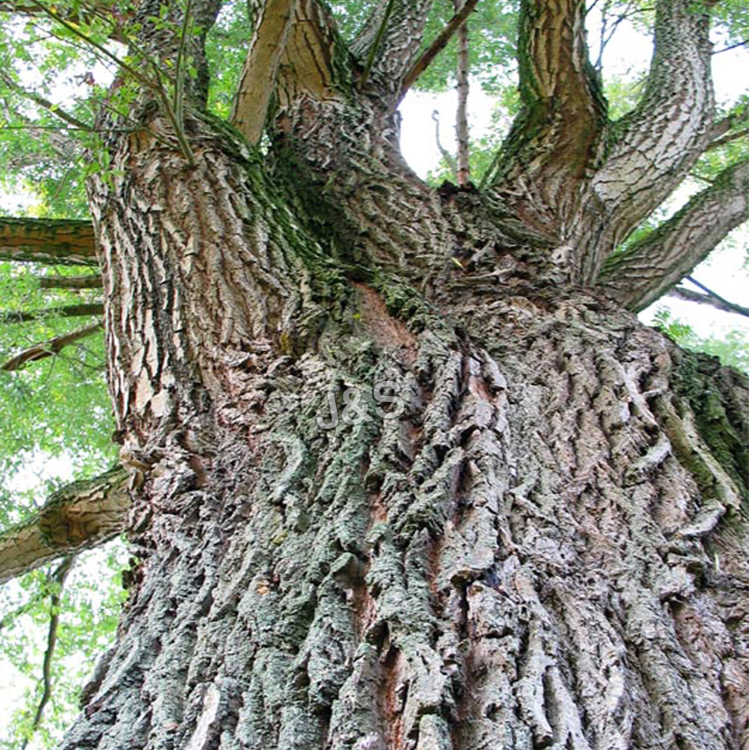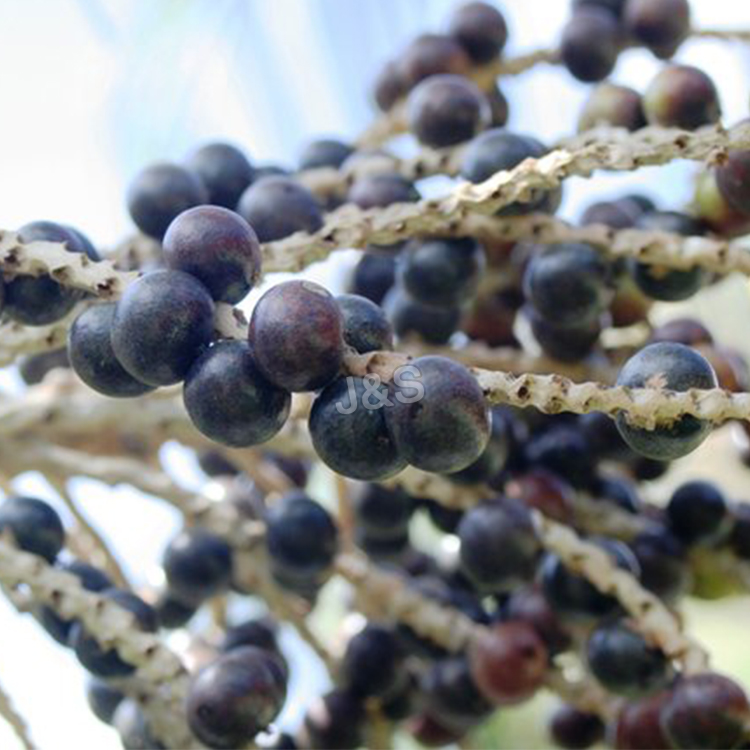High Performance Pine bark Extract in Chile
High Performance Pine bark Extract in Chile Detail:
[Latin Name] Pinus pinaster.
[Specification] OPC ≥ 95%
[Appearance] Red brown fine powder
Plant Part Used: Bark
[Particle size] 80Mesh
[Loss on drying] ≤5.0%
[Heavy Metal] ≤10PPM
[Storage] Store in cool & dry area, keep away from the direct light and heat.
[Shelf life] 24 Months
[Package] Packed in paper-drums and two plastic-bags inside.
[Net weight] 25kgs/drum
[What is Pine bark?]
Pine bark, botanical name Pinus pinaster, is a maritime pine native to southwest France that also grows in countries along the western Mediterranean. Pine bark contains a number of beneficial compounds that are extracted from the bark in a way that doesn’t destroy or damage the tree.
[How does it work?]
What gives pine bark extract its notoriety as a powerful ingredient and super antioxidant is that it’s loaded with oligomeric proanthocyanidin compounds, OPCs for short. The same ingredient can be found in grape seeds, the skin of peanuts and witch hazel bark. But what makes this miracle ingredient so amazing?
While OPCs found in this extract are mostly known for their antioxidant-producing benefits, these amazing compounds exude antibacterial, antiviral, anticarcinogenic, anti-aging, anti-inflammatory and anti-allergic properties. Pine bark extract can help reduce muscle soreness and may help improve conditions relating to poor circulation, high blood pressure, osteoarthritis, diabetes, ADHD, female reproductive issues, skin, erectile dysfunction, eye disease and sports stamina.
Seems like it must be pretty amazing, but let’s look closer. The list goes on a bit further, as the OPCs in this extract may “inhibit lipid peroxidation, platelet aggregation, capillary permeability and fragility, and to affect enzyme systems,” which basically means it may be a natural treatment for many serious health conditions, such as stroke and heart disease.
[Function]
- Lowers Glucose Levels, Improving Diabetic Symptoms
- Helps Prevent Hearing Loss and Balance
- Staves Off Infections
- Protects the Skin from Ultraviolet Exposure
- Decreases Erectile Dysfunction
- Reduces Inflammation
- Helps Increase Athletic Performance
Product detail pictures:

Related Product Guide:
High Performance Pine bark Extract in Chile , The product will supply to all over the world, such as: , , ,
https://shop.liveleantoday.com/sexual-enhancements/male-sexual-enhancements/extenze-best-natural-penis-enlargement-products-30-ct offers male sexual enhancement review of Extenze a popular sex product for men.
Contact me at kgahern@davincipress.com
Facebook friend me at https://www.facebook.com/kevin.g.ahern
Carbohydrates Lecture II Highlights
1. The Haworth form of a sugar is the cyclic form with an anomeric carbon. The Fischer form of a sugar is straight chained.
2. Disaccharides include sucrose, lactose, and maltose.
3. Sucrose is a non-reducing sugar, whereas lactose is a reducing sugar .
4. Linking together of more than one sugar residues creates higher order saccharides. These include disaccharides (two sugars), trisaccharides (three sugars), oligosaccharides (several sugars), and polysaccharides (many sugars).
5. Most of the linkages in higher order saccharides involve glycosidic bonds.
6. Oligosaccharides are components of glycoproteins.
7. The most common polysaccharides include glycogen (energy storage in animals), cellulose (structural integrity in plants), starch (energy storage in plants), chitin (exoskeleton of insects). Starch is comprised of a mixture of amylose and amylopectin.
8. Polysaccharides can be homopolymers (contain only one sugar residue) or heteropolymers (contain more than one sugar residue). Homopolymers include glycogen (glucose in alpha 1-4 linkages plus extensive alpha 1-6 branches), cellulose (glucose in beta 1-4 linkages), amylose (glucose in alpha 1-4 linkages), amylopectin (glucose in alpha 1-4 linkages plus some alpha 1-6 branches), and chitin (N-acetyl-D-glucosamine in beta 1-4 linkages).
9. Glycogen is an animal energy storage polysaccharide, amylopectin and amylose combine to form starch, which is a plant energy storage polysaccharide, cellulose is a plant structural polysaccharide, and chitin is a component of insect exoskeletons.
10. The enzyme cellulase is required to digest the beta 1-4 bonds of cellulose. Most animals do not contain cellulase. Ruminants and ungulates contain a bacterium that makes that enzyme.
11. Pectin is a polysaccharide of a modified sugar – galacturonic acid. I incorrectly stated in class that it is a glycosaminoglycan. It is not because it does not contain an amine group. Pectin is used as a thickening agent in foods like jellies.
12. Glycosaminoglycans are polysaccharides that contain either N-acetylgalactosamine or N-acetylglucosamine as one of their monomeric units. They are polyanionic and have interesting chemical properties, as a result. Examples include chondroitin sulfates and keratan sulfates of connective tissue, dermatan sulfates, heparin, hyaluronic acid, and others.
13. Lectins are proteins that bind to specific carbohydrates. They are called phytohemagluttinins in plants. They are used 1) in the immune system to recognize bacteria non-specifically and 2) by bacteria/viruses to attached to specific structures on the surface of cells to assist in attachment to the cell for the purpose of injecting nucleic acid. The flu virus enters the cell in this way. Exit of the flu virus from cells requires action of an enzyme called neuraminidase and it is this enzyme that is inhibited by the drug Tamiflu. When neuraminidase is inhibited, the flu virus can’t exit the cell and tends to aggregate.
14. The term glycolipids refers to lipids attached to carbohydrates. Common ones include sphingolipids, such as cerebrosides (attachment of one sugar) and gangliosides (attachment of complex carbohydrates).
15. Glycosaminoglycans are polymers of pairs of modified sugars. At least one of the sugars of each pair is negatively charged, such as glucuronic acid, creating a polyanionic compound.
16. Peptidoglycans are created when glycosaminoglycans are attached to peptides.
17. Glycoproteins are proteins attached to oligosaccharides. Attachment of the oligosaccharide is by two methods – N-linked oligosaccharides in glycoproteins are attached to the R-group amine of asparagine in a protein. This occurs in the endoplasmic reticulum and Golgi apparatus. O-linked oligosaccharides in glycoproteins are attached to the R-group hydroxides of serine/threonine in a protein. This occurs only in the Golgi apparatus.
18. Glycosylation patters of glycoproteins typically have a common core at the point of attachment to the protein and then the exterior oligosaccharide structures vary in composition.
19. Glycoproteins are important in cellular identity – transplant rejection, for example and they determine the various blood types.
20. Hyaluronan is a peptidolglycan (the glycosaminoglycan attached to it is hyaluronic acid) that is important in synovial fluid to lubricate joints.
21. Peptidoglycans and glycosaminoglycans often hava a “slimy” feel to them. Examples include chondroitin sulfate and heparin. Heparin is the material with the highest know density of negative charges arises from having sulfates in the monomers comprising it.
 By from -
By from -
 By from -
By from -






